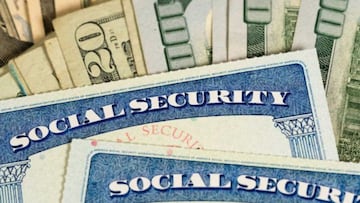Social Security checks: requirements to collect them and amounts
Each month, the SSA sends out Social Security checks. Here are the requirements for collecting the payments and the amounts that are sent.

The Social Security Administration (SSA) continues to send money each month to retired workers and other beneficiaries, such as those receiving Supplemental Security Income (SSI). Here are the requirements for cashing the checks and the amounts that are sent.
Social Security Checks: Eligibility Requirements and Amounts
To collect Social Security checks, you must be a beneficiary of the program. This means you must have a Social Security number (SSN), which you can get by being a US citizen, permanent resident, or by obtaining a work permit in the country. You must also meet certain requirements for Social Security credits, earnings and retirement age.
Related stories:
For checks, a person who is employed and pays Social Security taxes must accumulate 40 credits to receive monthly payments, which are based on the amount of earnings. The SSA uses earnings and work history to determine eligibility for retirement or disability benefits, as well as eligibility for families of deceased beneficiaries.
For 2022, individuals receive one credit for each $1,510 of earnings, with a maximum of four credits per year. Each year, the amount of income needed for the credits increases slightly as median income levels rise.
However, the SSA has special rules for certain types of work. Although self-employed people and those in the military get Social Security credits in the same way as employees, there are times when special rules apply, such as domestic work, farm work, or working for a religious or nonprofit organization that does not pay Social Security taxes.
How much can I receive?
This year, average payments for retired individuals stand at $1,657 per month, but could change considerably next year, depending on the increase in the cost-of-living adjustment (COLA).
According to an analysis by the Committee for a Responsible Federal Budget (CRFB), if inflation levels remain high, payments could increase by as much as 10.8 percent next year, while the SSA estimates an 8 per cent increase.
If the COLA for 2023 is 10.8 percent, average payments would increase to $1,837, while, following an SSA official’s projections, an 8 percent increase would raise the average check to about $1,790. The official check increase will be released in October and will take effect with January 2023 payments.





